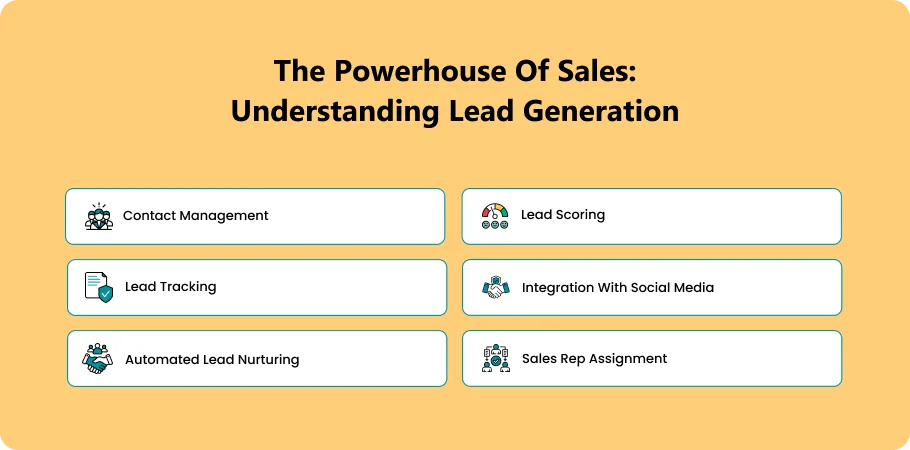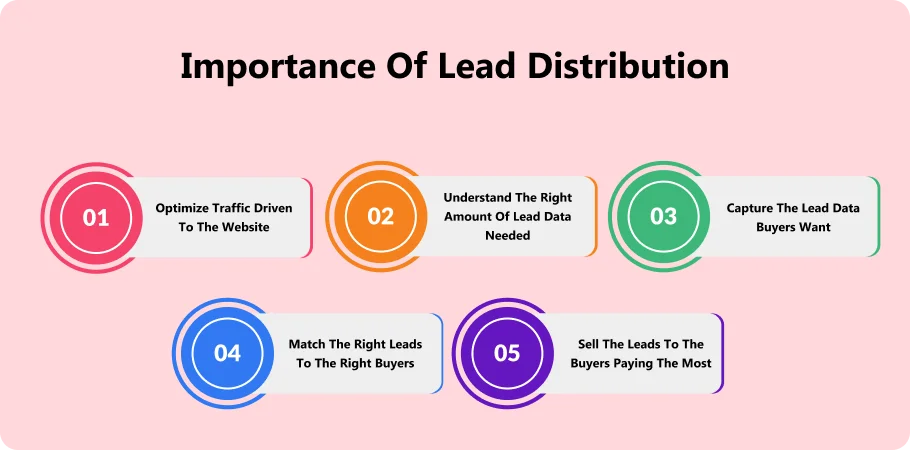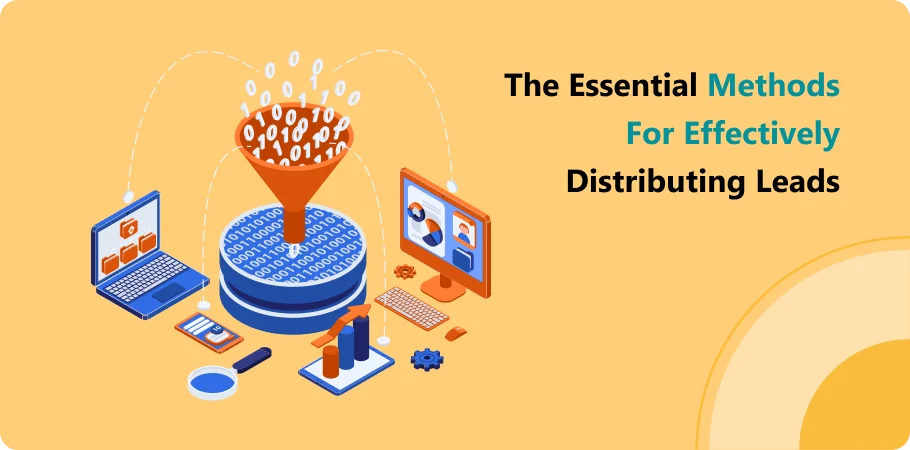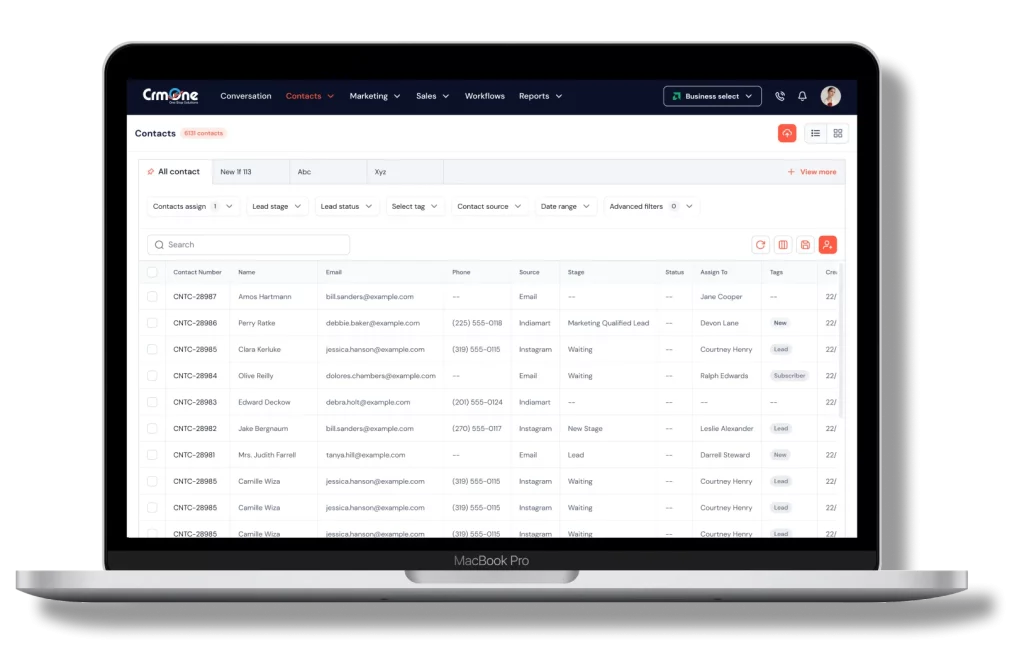Picture a giant crowd of potential customers, all interested in what you offer. Each one is a piece of the puzzle that helps your business thrive. But with this huge group scattered around, how do you turn them into a winning sales strategy?
Lead distribution is the process that comes to the rescue! It’s a system for organizing, nurturing, and turning those potential customers into loyal fans. By putting smart ideas, time-saving tools, and expert tips into action, businesses can smooth out their sales process. This way, every single person interested in what you have gets the attention they need and feels encouraged to buy. It might take some planning and work upfront, but the reward is fantastic!
You’ll end up with a sales system that runs smoothly, like a well-oiled machine. This will bring in more customers and help your business grow steadily over time. So, get ready to explore the exciting world of lead distribution, where success is waiting for those who jump in!
The Powerhouse of Sales: Understanding Lead Generation

Imagine a salesperson walking into a crowded room, unsure who’s interested in their product and who isn’t. That’s essentially the sales world without lead generation. Lead generation is the lifeblood of any successful sales operation. It’s the process of attracting potential customers (leads) who have shown some level of interest in your product or service.
Think of it like fishing. You wouldn’t cast your line into a random pond and hope for the best, right? You’d research, identify a good fishing spot, and use the right bait to attract the kind of fish you want to catch. Lead generation works similarly.
Here’s how it works:
Capturing Interest: The first step involves attracting potential customers. This can be done through various marketing channels like social media campaigns, content marketing (blogs, articles, videos), or even attending industry events. These efforts aim to capture the attention of people who might be a good fit for your product or service.
Qualifying Leads: Not everyone who shows initial interest is a good fit. Lead generation involves qualifying these leads to assess their buying potential. This can involve collecting information through forms, website interactions, or even direct conversations.
Distributing Leads to Sales Reps: Once qualified, leads are then distributed to sales reps who can nurture them further and eventually close the deal. Lead distribution methods can vary depending on factors like the lead’s needs, the salesperson’s expertise, or even geographical location. This ensures that the right lead connects with the best-equipped sales rep to convert them into a paying customer.
Importance of lead distribution

Lead distribution process is like handing out potential customers to your sales team. It help in converting mere leads to sales. It makes sure these interested people get connected with the right salesperson quickly. This way, you can chat with them sooner and keep them interested in what you offer, which means more sales for your business!
Here’s why using a lead distribution system is a great idea:
1. Faster Response Times: With a Lead distribution strategy, salespeople get leads fast so they can chat with potential customers right away.
2. Improved Efficiency: UsingLead Distribution Software, smart tools can automate assigning leads, saving time and avoiding mistakes.
3. Optimized Resource Allocation: Salespeople can be paired with the most suitable leads based on what each lead needs.
4. Enhanced Accountability: With a Lead distribution system in place, you can easily see who’s working with each lead and how it’s progressing.
5. Increased Revenue: By getting leads to the right salespeople, the lead distribution process can help you in having them follow up quickly, businesses can close more deals and make more money.
The essential methods for effectively distributing leads

1. Round Robin Distribution: This is like taking turns at bat in baseball. Each salesperson gets an equal chance to chat with new leads, ensuring fairness.
2. Priority-Based Distribution: Imagine giving each potential customer a score based on how likely they are to buy. Salespeople with a knack for closing deals get first dibs on the “hot leads” with high scores.
3. Skill-Based Routing: Not all salespeople are created equal! This method connects potential customers with salespeople who have the specific skills and knowledge to best address their needs.
4. Campaign-Based Distribution: Let’s say you run a special ad campaign for dentists. Leads generated from that campaign would be assigned to the sales team or salesperson that specializes in selling dental equipment, for example.
5. Hybrid Distribution: This is like having a toolbox with different tools for different jobs. You can combine these methods to find the best approach for your business. Maybe some leads get assigned based on skills, while others get distributed round robin for fairness.
Leveraging automation for maximum efficiency

Smart technology has ushered in a new era for lead management, transforming the way companies identify, nurture, and convert potential customers. Gone are the days of cumbersome manual processes and inefficient lead distribution. Today, CRMs and lead management software act as the central nervous system of sales operations, streamlining and accelerating the process of assigning leads to sales reps.
These tools go far beyond simply connecting leads to salespeople. They offer a suite of features that empower sales teams to nurture leads more effectively. By capturing and tracking lead interactions across various channels (website visits, email interactions, social media engagement), these platforms provide valuable insights into lead behaviour and buying intent.
This allows sales reps to tailor their communication and personalize their approach for each lead, significantly increasing the chances of conversion. The benefits of lead distribution automation extend far beyond efficiency gains. By automating lead scoring, routing, and follow-up tasks, smart technology eliminates the risk of human error associated with manual lead distribution.
This ensures that no potential customer gets missed during the crucial early stages of lead capture. Moreover, automated systems can instantly assign leads based on predefined criteria, such as industry, location, or lead score, ensuring the right lead gets connected with the best-equipped sales rep to handle their specific needs.
This targeted approach leads to quicker responses, a more positive customer experience, and ultimately, higher sales conversion rates. Furthermore, these powerful tools provide businesses with valuable data and analytics. By tracking lead behaviour and sales rep performance, companies can identify areas for improvement and continuously refine their lead assignment strategies.
This data-driven approach allows for the optimization of lead nurturing campaigns, maximizing the return on investment (ROI) for marketing efforts. For sales teams, lead distribution automation acts as a game-changer. By automating tedious and time-consuming tasks, these tools free up valuable time for sales reps to focus on high-value activities like building relationships and closing deals.
This translates to significant gains in productivity, allowing sales teams to achieve more in less time. Strategic implementation of lead distribution automation can give businesses a significant competitive advantage. By automating tasks previously handled through manual processes, companies can accelerate growth and outpace competitors who are still relying on outdated methods.
In today’s dynamic market, the ability to identify and convert qualified leads quickly and efficiently is essential for long-term success. Lead distribution automation empowers businesses to do just that, paving the way for sustained sales growth and a brighter future.
In essence, automation streamlines lead capture, eliminates tedious manual work, and expedites the process of assigning leads to sales reps, ultimately propelling businesses towards achieving their sales goals..
Here’s how it helps…
1. Real-Time Lead Routing: Automation tools can instantly route leads to the most appropriate and different sales reps based on predefined rules and criteria, such as geographic location.
2. Lead Scoring and Prioritization: Automated lead scoring algorithms can evaluate lead quality and prioritize leads for immediate attention, ensuring that high-potential prospects receive prompt follow-up.
3. Integration with CRM Systems: With the use of lead distribution, automation platforms seamlessly integrate with Customer Relationship Management (CRM) systems, enabling seamless transfer of lead data and updates between sales and marketing teams.
4. Alerts and Notifications: Through lead distribution, automated alerts and notifications can notify sales teams of new leads assigned to them, prompting timely follow-up actions.
5. Performance Analytics: The lead generation tools which are used to assign leads during the lead distribution process by sales reps, can give valuable information about how well they are doing. This helps them find areas that are slowing things down (bottlenecks), make the lead distribution process smoother, and get more done in less time.
Book a CrmOne Demo
Experience the CrmOne simplicity and power. Our experts will show you the best ways to use it and answer your questions in real time. See how CRMOne fits your needs.

Best practices for successful lead distribution

To make sure you’re giving the best leads to your sales reps, consider a scoring system for your lead generation strategy. Your lead distribution system can look at things like age, location, how people interact with your website, and how interested they seem. This lead generation software helps you focus on the most promising leads first, ensuring your sales reps spend their time nurturing the hottest prospects. But remember, this is an ongoing process!
Regularly check how well it’s working and make changes based on the results and what your sales team tells you. Strong teamwork between sales and marketing is also important. The better they work together, the better the quality of leads you’ll get, which means more sales! Finally, make sure your sales reps are properly trained on the tools and processes involved in lead distribution, empowering them to effectively manage their leads. By following these steps, you’ll get the most out of your leads and turn more of them into sales.
1. Clear Lead Matching: Set up clear rules for who gets assigned which leads through the Lead distribution software. Consider where the lead came from, how interested they seem, their location, and which salesperson has the best skills to help them.
2. Keep Your Rules Updated: Regularly check how well your lead distribution software works and make changes based on results and feedback from your sales team. This ensures you’re assigning leads in a way that helps your business achieve its goals.
3. Train Your Sales Team: Make sure your salespeople have the knowledge and tools they need to talk to leads effectively and guide them through the sales process.
4. Sales & Marketing Teamwork: Encourage your sales and marketing teams to work together closely. This helps ensure leads get smoothly handed off from marketing to sales and everyone’s on the same page while integrating the lead distribution process.
5. Track Your Progress: Keep an eye on key numbers (KPIs) that will show how well your lead distribution software is working. This includes things like how long it takes to respond to leads, how many leads turn into customers, and how quickly deals are closed. Use this information to make improvements!
Measuring and analyzing the effectiveness of your lead distribution strategy

The lead distribution software you use can significantly improve your lead assignment process in two key ways: implementing a lead scoring system and fostering stronger collaboration between sales and marketing teams. Once you’ve established these foundational elements, the next crucial step involves tracking the effectiveness of your automated lead distribution strategy.
Effective lead capture methods, both online and offline, are essential for attracting and acquiring new potential customers (inbound leads). Your automated lead distribution strategy then takes center stage, intelligently routing these captured quality leads to the most suitable sales representatives based on predefined lead assignment rules.
These rules can consider factors like lead score, geographic location, industry, or product interest, ensuring each lead connects with the most qualified sales rep best equipped to convert them.
By tracking key performance indicators (KPIs) of lead distribution such as conversion rates, lead response time, and sales velocity, you gain valuable insights into the performance of your lead assignment process.
These metrics reveal how many leads are successfully converted by sales reps, how long it takes for experienced sales reps to contact leads, and the overall speed at which leads progress through the sales funnel. By analyzing these KPIs, you can continually refine your lead scoring system, optimize your lead assignment rules, and ultimately, maximize the effectiveness of your entire sales operation.
1. Conversion Rates: This is like a scorecard for turning incoming leads into customers. It shows what percentages of interested people buy something from you. This helps you see if your sales and marketing efforts are working well.
2. Lead Response Times: How fast do your salespeople respond to potential customers? This is important because interested people tend to buy from the company that reaches out to them first.
3. Sales Velocity: Imagine your incoming leads in the sales process like a race track. Sales velocity tells you how quickly leads move through that track, from the first contact to becoming a customer. A faster speed means your sales team is efficient and closing deals quickly.
Want to get more sales? Check how you assign leads fairly through your designed lead distribution strategy and make tweaks as you go. Tracking key numbers helps you see what’s working and make data-driven decisions to boost your business.
Implementing Feedback Loops for Continual Improvement

To ensure continued success in lead distribution, implementing feedback loops with automated lead distribution is crucial. Encourage open communication between sales and marketing teams to gather valuable insights on what is working well and what can be enhanced. Here’s how you can effectively implement feedback loops:
1. Foster Open Communication:
While operating your lead distribution, encourage a culture of transparency and collaboration between sales and marketing teams. Create channels for regular communication, such as team meetings, brainstorming sessions, and collaboration tools, to facilitate the exchange of ideas and feedback.
2. Solicit Feedback Regularly:
Regularly seek feedback from both sales and marketing teams, as well as from customers. Provide avenues for team members to share their observations, challenges, and suggestions for improving the lead distribution process.
3. Analyse Feedback Data:
Collect and analyse feedback data systematically to identify recurring themes, patterns, and areas for improvement. Look for common pain points, bottlenecks, or opportunities that emerge from the feedback received.
4. Make Necessary Adjustments:
Using the feedback you get, you can improve how you assign leads to your sales team. This might involve making adjustments to how you score leads, changing the rules for assigning them or finding better ways for your sales and marketing teams to communicate.
5. Actively Listen to Stakeholders:
Actively listen to input from all key stakeholders, including sales representatives, marketing professionals, and customers. Consider their perspectives and incorporate actionable feedback into your strategy implementation process.
6. Refine Processes Continuously:
Use feedback loops to refine your processes continuously. Monitor the impact of changes implemented based on feedback and iterate as needed to address evolving needs and challenges.
7. Stay Ahead of Market Trends:
Keep an eye on market trends, industry developments, and competitor strategies. Listen to your customers and team to understand what’s changing, and then adjust how you assign leads to keep up!
Don’t forget, that getting feedback is the key to constantly improving how you assign leads and stay ahead of the competition. Ask your team and customers for their thoughts, make adjustments based on what you learn, and adapt to what’s happening in the market. This will help you get the most out of your lead distribution process!
Conclusion
Distributing leads strategically is a critical driver of business growth. There are several effective lead distribution methods you can employ. You can distribute leads fairly (round robin), prioritize the most promising ones (priority-based), or match them with the most skilled salespeople for the job (skill-based).
Utilizing smart tools like automation in your lead distribution process can significantly improve its speed and accuracy. Automated lead distribution frees up your team’s time, minimizes the risk of errors, and provides valuable insights for continuous improvement.
Furthermore, fostering collaboration and information sharing between your sales and marketing teams is crucial. This collaboration enhances their ability to find, nurture, and qualify leads, ultimately leading to more sales!
By implementing these strategies for distributing leads, you’ll be well on your way to turning more leads into customers and fuelling your business’s long-term growth. Remember, as market dynamics evolve, your approach to lead distribution will significantly impact your success.
Get started for Free
Start for free today. Boost your sales by clicking the Get Started button. With CRMOne, you can manage leads, sales, and customer service all in one place.

